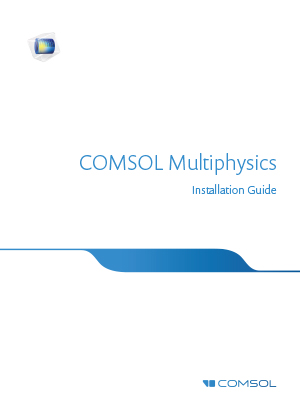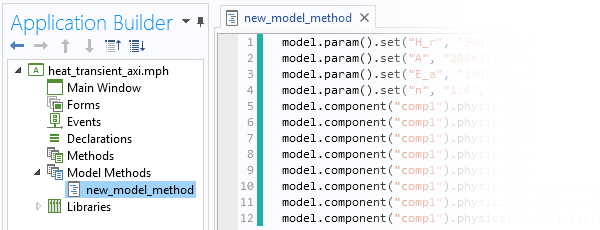

- #Comsol multiphysics programming reference manual how to#
- #Comsol multiphysics programming reference manual manual#
- #Comsol multiphysics programming reference manual full#
- #Comsol multiphysics programming reference manual software#

Define the physics settings (material properties, boundary conditions, initial conditions, etc.).Although there is no explicit sequence of steps that must be followed, the general procedure for using the approach is as follows:
#Comsol multiphysics programming reference manual manual#
Procedure to Implement the ApproachĪs noted earlier, the manual approach using user-defined couplings can be implemented in a variety of different ways. Some guidelines and suggestions on how a manual multiphysics coupling can be implemented are discussed below. But in most cases, the manual, user-defined couplings are used when there is no predefined multiphysics coupling available. The upside is that you have the predefined multiphysics couplings as reference to compare with. Although there are readily available predefined multiphysics interfaces and couplings, user-defined couplings are often used in teaching to show students how different equations describing different physics phenomena can be coupled manually.
#Comsol multiphysics programming reference manual full#
However, even the manual approach is straightforward to use and gives you full control of the model definition. This is why we recommend utilizing the fully automatic approach or manual approach with predefined couplings whenever possible. Since this approach requires that you know the equation formulation in detail, and since you have to enter equation contributions manually, it is the most error-prone and usually also the most laborious way of defining multiphysics models. A screenshot of the model tree with the Equation View option under the Pressure Acoustics node selected, with the list of variables shown on the right.Įquation View for the Pressure Acoustics node, from which a variable is used for a boundary condition in another physics interface (as pictured in the previous screenshot) in order to manually couple the two physics interfaces. However, this is also available as a predefined multiphysics coupling in the Acoustics Module. In the Piezoelectric MEMS Speaker tutorial model, a Boundary Load is used to manually couple the Solid Mechanics interface and Pressure Acoustics, Frequency Domain interface. Some examples include using expressions to make material properties or boundary conditions functions of the dependent variables of another physics interface. There is no standard that dictates how it necessarily should or can be implemented, as it will vary depending on what is being modeled. This approach is wide and vast with respect to how it can be implemented for defining multiphysics models. The Pressure Acoustics, Transient interface of the probe tube microphone tutorial model, wherein the dependent variable, p2, is used to manually couple it to the Pipe Acoustics, Transient interface through a Pressure condition (as pictured in the previous screenshot). The Model Builder in COMSOL Multiphysics, with the model tree showing the Pressure Acoustics, Transient condition selected, the Settings window showing the Pressure Acoustics, Transient condition settings, and the Graphics window showing the model geometry. The Pressure condition in the probe tube microphone tutorial model, which is used for manually coupling the 1D (pipe) and 3D (exterior) domains in the model.

The Model Builder in COMSOL Multiphysics, with the model tree showing the Pressure condition selected, the Settings window showing the Pressure condition settings, and the Graphics window showing the model geometry. We refer to this multiphysics modeling approach as the manual with user-defined couplings approach, since it involves manually administering the coupling and interaction between physics interfaces. This is done through user-defined variables, expressions, equations, or functions to couple different physics interfaces.
#Comsol multiphysics programming reference manual software#
When there is no alternative predefined option to define the multiphysics couplings in a model, there is functionality in the software that provides you with the flexibility to manually implement custom multiphysics couplings. When to Use the Manual Approach with User-Defined Couplings The approach requires more effort to implement than the manual with predefined couplings approach and completely contrasts the automatic approach, which provides an almost fully automated implementation.
#Comsol multiphysics programming reference manual how to#
Here, we discuss how to implement the approach with a combination of physics phenomena in your model. We refer to this as the manual approach with user-defined couplings. In COMSOL Multiphysics ®, you can manually administer couplings between physics interfaces for which no coupling features are available. Defining Multiphysics Models Manually with User-Defined Couplings


 0 kommentar(er)
0 kommentar(er)
